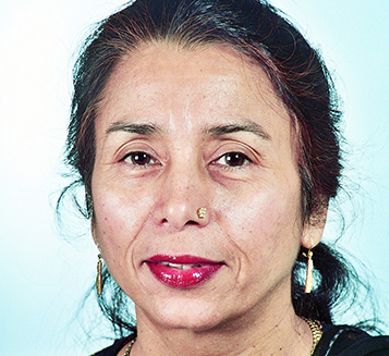During the last four decades, the percentage of non-nationals has steadily increased in the six Gulf Cooperation Council (GCC) countries. Currently, almost half (48.1 percent) of the combined GCC population consists of non-nationals. The rise in proportion of expatriates is contrary to the desires and plans of the host countries. The objective of this workshop is to identify and discuss the factors that are likely to be central in determining the future trends in the volume, pace, and shape of future migrant inflows to the GCC countries. Factors determining the future migration to the Gulf will continue to originate in the sending countries as well as the GCC countries, as in the past. In the sending countries, the slow pace of social and economic development combined with relatively high population growth rates continues to result in high rates of unemployment and underemployment, leading to overseas migration. This is perceived by the sending country governments as a “safety valve” and has become an attractive alternative for migrants looking for better economic opportunities in life. In the Gulf countries, the extensive plans for infrastructure and socioeconomic development continue to necessitate the inflow of foreign workers not available 2 indigenously. The supply of indigenous workers remains low as a result of the relatively small population base in most of the GCC countries, low rates of female work participation, and the concentration of nationals in public sector jobs that make up a relatively smaller part of the economy. Efforts to nationalise the labour force have been marginally successful. In addition, a tendency towards maximising the length of stay in the Gulf is found among migrants, resulting in the growth of a second and third generation that considers the Gulf as home. The long-term stay of foreign workers is accompanied by the growth of extensive networks of friends and relatives that aid the migrants’ ability to prolong their stay in the Gulf. Finally, the recent wave of political unrest in the Arab region may be an important factor that may heighten migration to the Gulf in future.
3 DAYS / 12 Workshops
MORE THAN 300 ACADEMIC PAPERS
Contrary to the plans and desires of the six Gulf Cooperation Council (GCC) countries, the proportion of non-citizens in the Gulf has steadily increased during the last four decades. Country-based data reveal that the percentage of non-nationals comprised 48.1 percent of the total population of 48.1 million GCC residents (Table 1). A very significant difference exists in the proportion of non-nationals in the various GCC countries, ranging from 32.0 percent in Saudi Arabia to 88.5 percent in the United Arab Emirates.
GCC countries share many of the policies that they have instituted during the last two
decades for limiting the number of non-nationals in their populations and the labour
force. Such policies include ones related to maximising the number of nationals through
high fertility and participation of women in the labour force. At the same time, active
efforts are being made to restrict the inflow of foreign workers. Despite the heightened
efforts aimed at restricting the percentage of non-nationals, the outflows from the major
sending countries in Asia show an upward trend (Shah 2012), as do the inflows to the six
GCC countries (Fargues and Brouwer 2012).
3
Two of the main reasons for the increasing percentages of non-nationals are the
continued need of the labour force for foreign workers and the exacerbating stock of
foreign workers in the GCC countries. While data on the duration of stay of non-nationals
are not available for any of the countries in a systematic manner, observation suggests
that migration to the Gulf is not a “temporary” phenomenon as conceived and planned by
the governments. Once in the Gulf, migrants are able to prolong their stay for several
years. Those who are allowed to bring their families with them are able to produce a
second generation of migrants in the host countries. A recent study from Kuwait shows
that about 18 percent of all non-nationals were born in the country. Among high school
students who were born in the country, about one-third of the parents were also born in
Kuwait, implying that the students were in fact third generation (Shah 2013).
Factors that affect the volume and pace of migration originate in the sending countries as
well as in the Gulf. In the sending countries, the relatively low rate of socioeconomic
development combined with a high rate of population growth in many of the South and
Southeast Asian countries ensures a continued supply of inexpensive labour that is
willing and able to move to the Gulf countries to benefit from higher wages paid there,
relative to those in their home countries. Labour migration continues to be encouraged by
the sending countries as a means of reducing unemployment and enhancing foreign
exchange earnings. Effective regulatory mechanisms have been developed by several
Asian countries to maximise outflows and simultaneously increase the protection and
welfare of their emigrating workers. In addition, vast social networks of foreign workers
and their families have been established within the Gulf countries that support chain
migration and the enlargement of the stock of workers.
In the Gulf countries, extensive plans for infrastructure and socioeconomic development
continue to necessitate the import of foreign workers in view of the small number of
indigenous workers. In addition, foreign workers are needed to fill many jobs in the
private sector that the citizens are reluctant to take up e.g., construction and factory
related jobs. Citizens prefer to work in public sector jobs that are less arduous and less
competitive. The supply of indigenous workers is also curtailed by the limited
participation of women in the labour force. Gulf governments have made concerted
efforts to increase the education and skill level of women and their participation in the
workforce has been rising. However, most employed women are concentrated in the
public sector and in a limited number of occupations (e.g., teaching and clerical work).
With the rising personal income of Gulf citizens, a new dimension has been added to the
lifestyle in the form of the rapid rise in demand for domestic workers. Large numbers of
domestic workers from the Philippines, Indonesia, India, and Sri Lanka have arrived
during the last 3-4 decades to work in the Gulf. Most are sponsored by individual families
and work for them. Some are sponsored by families (for a fee) but engage in freelance
work which is considered illegal. The experience of Kuwait highlights the enormity of
this phenomenon. In a population of 2.2 million legal foreign residents, the country had
607,667 persons (26.4 percent) on a domestic service visa in 2012 (Ministry of Interior
data available in the GLMM Database).
4
The wave of protest and political unrest that spread over the Arab region in recent years
might have an impact on migration to the Gulf States. Unrest in Bahrain may have
produced some outflows from the country, while revolts in Egypt, Syria, and Yemen
must be expected to affect flows of migration to the GCC. One cannot predict the longterm impact of the Arab Spring on migration, which will be anything from return
migration, if revolts end up bringing freedom, democracy and well-being, to increased
emigration if they fail to do so. In the short term, however, it is increased emigration
pressure which is observed. How much of that pressure is exerted on the GCC countries
and how do GCC governments receive migrants from countries where there is political
unrest are questions still to be answered.
Finally, the attitudes and perception of the nationals towards foreigners is likely to be an
important factor in how “welcome” or “unwelcome” the foreigners feel. The general
treatment accorded to foreigners by nationals may influence a migrant’s decision to
continue staying in a Gulf country or to return home, or move to another country. A two
way association probably exists between the citizens’ perceptions of foreigners and
government policies relating to foreigners. Both may impact future decisions about
whether to bring in foreign workers.

